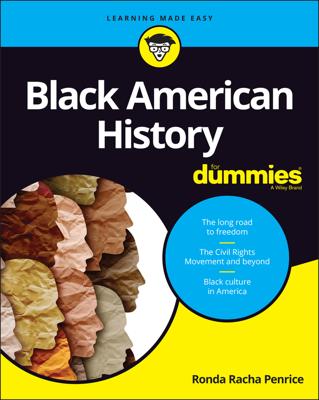In the summer of 1964, Mississippi, where countless individuals were boldly murdered without consequence, continued its reign as a segregationist stronghold. Bob Moses, a former SCLC volunteer and a Student Nonviolent Coordinating Committee (SNCC) leader, believed that change in Mississippi would greatly influence the nation. The goal? Register black voters. During that eventful summer, known as Freedom Summer, volunteers poured into the state determined to make a difference.
As more and more whites, especially students, signed up for duty in the fight for black equality, civil rights leaders shifted their goal from desegregation to voting rights. Although the Fourteenth and Fifteenth Amendments established voting rights for African Americans, whites in many Southern states either intimidated blacks or established roadblocks such as poll taxes and literacy tests to keep them from voting.
Before Freedom Summer began
Beginning a voter registration project in Mississippi was daunting, to say the least. On the surface, McComb, a small town in rural Mississippi, wasn’t an ideal place to launch a voter registration campaign: Shortly after New York math teacher Bob Moses’s arrival, a Mississippi state legislator who shot a black man for registering to vote was acquitted. When an FBI agent tipped off local police that another black man who witnessed the shooting intended to testify, the witness was beaten and killed.
Initially African Americans in McComb, understandably cautious considering the racial climate, welcomed Moses and provided him with financial and other resources. Less cautious than the older community, McComb’s black youth eagerly embraced change. One ambitious youth lied about her age and led a sit-in that got her expelled from high school and sent to reform school. Some parents were outraged, but many students kept on agitating, even choosing civil rights work over school. Harassment, murders, and beatings didn’t deter them.
Throughout the state, black Mississippians stepped up. Medgar Evers is probably the best-known, but Aaron Henry, Fannie Lou Hamer, Dr. T.R.M. Howard, and Amzie Moore were also noted local leaders in the voter registration campaign, not to mention countless others whose names don’t grace the history books. Promised much-needed funding by Robert Kennedy, the Voter Education Project launched in April 1962.
A mock election called Freedom Vote held in 1963 drew almost 80,000 black voters, proving that black Mississippians wanted to vote. Encouraged by this and the presence of white volunteers, Bob Moses proposed Freedom Summer.
Organizing the Freedom Summer volunteers
Robert Kennedy, who arranged funding for black voter registration campaigns, wouldn’t commit federal protection for volunteers. Moses was convinced that placing college students, preferably white, in black communities throughout Mississippi to register black residents to vote as well as teach them reading and math would secure federal protection.
At orientation sessions held in Ohio, Freedom Summer organizers emphasized potential risks such as arrest, jail time, or death to volunteers. The volunteers were also required to bring $500 in bail money and instructed not to antagonize Mississippi police officers who arrested them. In June, hundreds of volunteers, mostly white, poured into Mississippi. Given Mississippi’s volatile racial history, the Johnson administration worried about the safety of Freedom Summer participants and the potential impact on the nation.
By the time Freedom Summer kicked off, 900 volunteers had signed up for the fight. The central battleground became Greenwood, Mississippi, situated in the notorious Mississippi Delta region between Memphis, Tennessee, and Jackson, Mississippi, in the notorious Mississippi Delta region.
Tragedies of the Freedom Summer campaign
Tragedy struck early for the volunteers pouring into Mississippi. On June 21, after investigating a church bombing in Lawndale, local police stopped two white Northerners Andrew Goodman and Michael Schwerner and black Mississippian James Chaney for speeding and took them to jail. Although reportedly released that same night, the three men disappeared. Instead of investigating, state police claimed that the trio staged their own disappearance as a publicity stunt.
The FBI got involved, and as the investigation dragged on, public outcry pressed the search on. On August 4, just days before the all-important Democratic National Convention, the three bodies surfaced just outside Philadelphia, Mississippi. Their deaths shifted public attention to Freedom Summer and its mission in Mississippi.
By the end of the year, the FBI arrested 18 people, mostly Ku Klux Klan members, in relation to the murders. Although most of the people arrested received convictions, the convictions were for breach of civil rights, not murder (this case is the basis for the 1988 film Mississippi Burning). A murder conviction came decades later in January 6, 2005, when mastermind Edgar Ray Killen, a minister, finally received justice.
The success of Freedom Summer
Prior to Freedom Summer, just under 7 percent of Mississippi’s voting-age black population had registered to vote. By 1969, that number had climbed to nearly 67 percent. The 17,000 black Mississippians who attempted to vote during the turbulent project helped achieve these numbers; so did the 1,600 who actually voted. This success rate contributed to the passage of the Voting Rights Act of 1965.
Forty-one freedom schools helped educate black Mississippians about much more than learning how to vote. Likewise, black Mississippians taught the students and the world that hope could thrive in the direst circumstances. Most important, Freedom Summer demonstrated the positive impact that all Americans, be they white and privileged or black and poor, could have on the nation overall.

